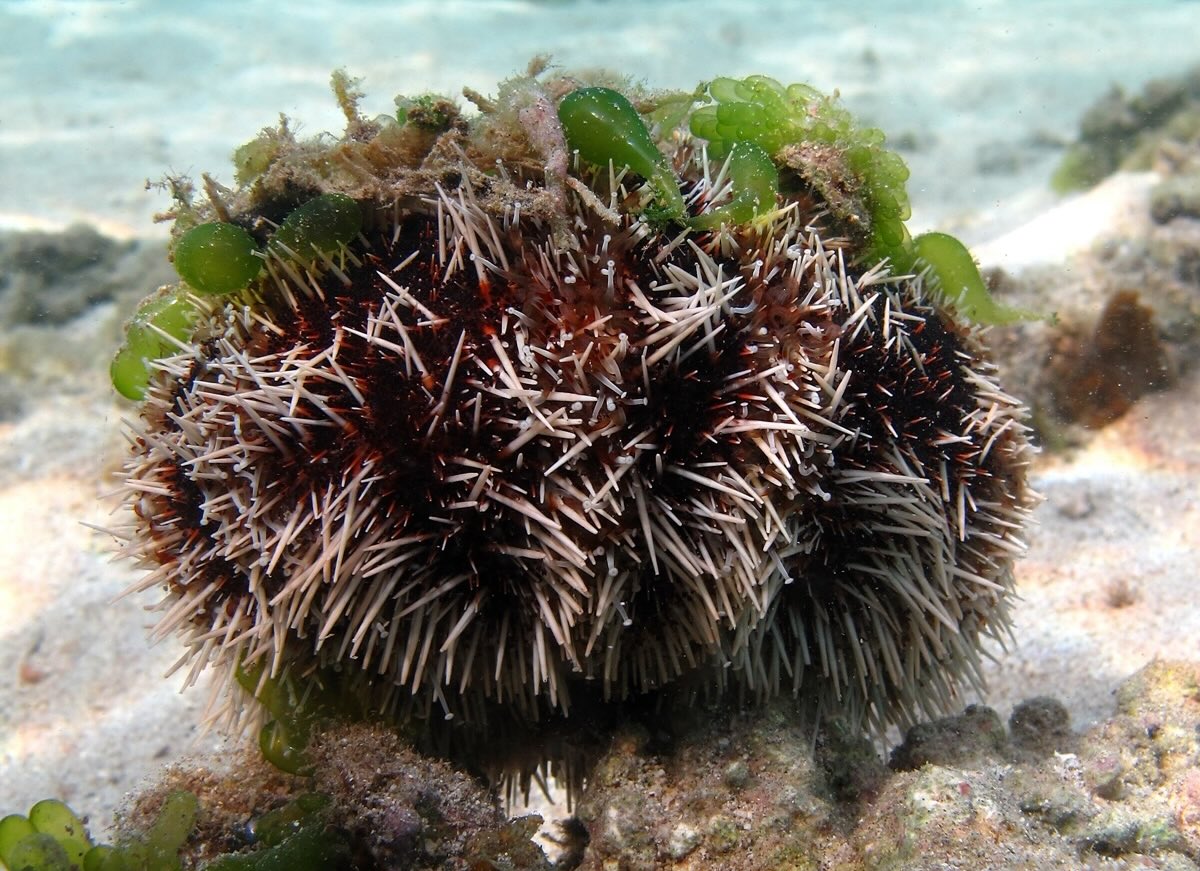
Collector urchins are fascinating creatures that play a crucial role in marine ecosystems. These spiny sea dwellers are not just pretty to look at; they help maintain the balance of underwater habitats. Ever wondered how they do it? Collector urchins feed on algae, preventing overgrowth that could harm coral reefs. They have a unique way of moving around using tiny tube feet, which makes them quite the underwater acrobats. Did you know they can regenerate lost spines? This ability helps them fend off predators and stay safe. Ready to dive into more intriguing facts about these amazing sea creatures? Let's get started!
Key Takeaways:
- Collector urchins, like the Tripneustes gratilla, are colorful herbivores found in coral reefs. They play a vital role in maintaining the balance of marine ecosystems by grazing on algae.
- These fascinating sea creatures are important subjects of study in marine biology, serving as indicators of ecosystem health and contributing to our understanding of climate change's impact on marine life.
What is a Collector Urchin?
Collector urchins are fascinating marine creatures known for their unique appearance and behavior. These spiny echinoderms play a vital role in their ecosystems, often found in coral reefs and rocky seabeds. Let's dive into some intriguing facts about these remarkable sea urchins.
-
Scientific Name: The collector urchin's scientific name is Tripneustes gratilla.
-
Habitat: They thrive in warm, shallow waters, typically in coral reefs and rocky areas.
-
Diet: Collector urchins are herbivores, primarily feeding on algae.
-
Spines: Their spines are not just for show; they help protect against predators.
-
Coloration: These urchins can be quite colorful, often displaying hues of purple, red, and green.
-
Size: On average, they grow to about 10-15 cm in diameter.
-
Lifespan: In the wild, they can live up to 15 years.
-
Reproduction: Collector urchins reproduce by releasing eggs and sperm into the water, where fertilization occurs externally.
-
Symbiosis: They often have a symbiotic relationship with small fish and shrimp, which help clean their spines.
-
Role in Ecosystem: By grazing on algae, they help maintain the balance of coral reef ecosystems.
Unique Features of Collector Urchins
Collector urchins possess several unique features that set them apart from other sea urchins. These characteristics not only make them interesting to study but also crucial to their survival.
-
Tube Feet: They use tube feet for locomotion and feeding.
-
Aristotle's Lantern: This is a complex jaw structure used for scraping algae off surfaces.
-
Camouflage: Some collector urchins cover themselves with debris for protection.
-
Regeneration: They can regenerate lost spines and even parts of their body.
-
No Brain: Despite their complex behaviors, they lack a centralized brain.
-
Sensitive to Light: Their spines can detect light, helping them avoid predators.
-
Water Vascular System: This system helps them move and feed efficiently.
-
Pedicellariae: Small pincer-like structures on their body help keep them clean.
-
Venomous Spines: Some species have venomous spines to deter predators.
-
Bioluminescence: In some cases, they can emit light, although this is rare.
Importance of Collector Urchins in Marine Biology
Collector urchins are not just fascinating creatures; they are also important subjects of study in marine biology. Their behaviors, physiology, and interactions with their environment provide valuable insights.
-
Indicator Species: They can indicate the health of coral reef ecosystems.
-
Research Subjects: Used in studies on regeneration and developmental biology.
-
Algae Control: Help prevent algal overgrowth on coral reefs.
-
Bioindicators: Their presence can signal changes in marine environments.
-
Aquarium Trade: Popular in the aquarium trade for their algae-eating habits.
-
Climate Change Impact: Studying them helps understand the impact of climate change on marine life.
-
Genetic Studies: Their simple genetic makeup makes them ideal for genetic research.
-
Ecological Balance: Play a crucial role in maintaining the ecological balance of their habitats.
-
Conservation Efforts: Efforts are being made to conserve their populations due to their ecological importance.
-
Educational Value: Serve as educational tools in marine biology courses.
Fun and Lesser-Known Facts
Beyond their scientific importance, collector urchins have some fun and lesser-known facts that make them even more intriguing.
-
Ancient Creatures: Sea urchins have existed for over 450 million years.
-
Culinary Delicacy: In some cultures, their gonads are considered a delicacy.
-
Unique Movement: They can move in any direction without turning their body.
-
Social Creatures: Often found in groups, which helps them avoid predators.
-
Cultural Significance: Featured in various myths and folklore around the world.
The Final Word on Collector Urchins
Collector urchins are fascinating creatures with unique traits. They play a crucial role in marine ecosystems by controlling algae growth. These urchins have a knack for decorating themselves with shells and rocks, which helps them blend into their surroundings. Their spines, while intimidating, are mostly harmless to humans. However, handling them with care is always a good idea.
Understanding their behavior and habitat can help in conservation efforts. These urchins are not just important for the ocean but also for scientific research. They offer insights into marine biology and the health of coral reefs.
So, next time you see a collector urchin, remember its importance. These small creatures have a big impact on their environment. By learning about them, we can appreciate the delicate balance of marine life and work towards preserving it.
Frequently Asked Questions
Was this page helpful?
Our commitment to delivering trustworthy and engaging content is at the heart of what we do. Each fact on our site is contributed by real users like you, bringing a wealth of diverse insights and information. To ensure the highest standards of accuracy and reliability, our dedicated editors meticulously review each submission. This process guarantees that the facts we share are not only fascinating but also credible. Trust in our commitment to quality and authenticity as you explore and learn with us.
